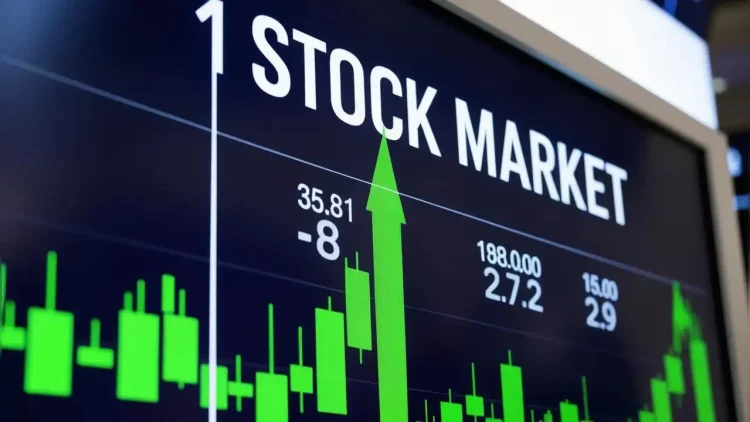Abstract
Global stock markets serve as both mirrors and engines of the world economy. They reflect macroeconomic shifts such as globalization, technological innovation, and monetary policy changes, while also being shaped by investor psychology, herd behavior, and market sentiment. This paper explores how stock market trends capture the dynamics of economic transformation and human decision-making. By examining theoretical frameworks, historical developments, and contemporary case studies—including the 2008 financial crisis, the rise of technology stocks, and post-pandemic volatility—it highlights the interplay between structural economic forces and behavioral finance. Ultimately, the analysis underscores the importance of understanding stock markets not merely as financial systems, but as complex social phenomena that embody both rational expectations and collective emotions.
Introduction
Stock markets are often perceived as chaotic, volatile, and unpredictable. Yet, behind the fluctuations lie patterns that reveal deeper truths about global economic trends and human behavior. The performance of equity markets does not simply measure corporate profitability; it also reflects investor confidence, societal expectations, and the trajectory of entire economies.
In recent decades, global markets have become increasingly interconnected. A policy decision by the U.S. Federal Reserve ripples through emerging markets; economic growth in China affects commodities and stock indices worldwide. Simultaneously, technological advances and behavioral finance theories have reshaped how investors approach risk, speculation, and long-term value.
This paper investigates the dual role of stock market trends: (1) as reflections of broader economic transformations, and (2) as outcomes of collective investor behavior.
Theoretical Frameworks
1. Efficient Market Hypothesis (EMH)
According to EMH, stock prices incorporate all available information, making it impossible to consistently outperform the market. This theory suggests that trends reflect rational adjustments to new information.
2. Behavioral Finance
Contrary to EMH, behavioral finance emphasizes biases, heuristics, and emotions. Herding, overconfidence, and loss aversion often drive stock market bubbles and crashes.
3. Globalization and Interdependence
International finance theory stresses the growing interconnectedness of global markets. Stock trends are increasingly shaped by cross-border capital flows, supply chains, and currency movements.
Historical Perspectives
The Great Depression (1929)
The U.S. stock market crash revealed the dangers of speculative bubbles. The collapse transmitted shockwaves worldwide, showing how markets reflect systemic vulnerabilities.
The 1987 Black Monday Crash
Triggered by program trading and investor panic, the event underscored the speed at which technology and psychology can magnify volatility.
The Dot-Com Bubble (1990s–2000)
Speculative enthusiasm for internet companies inflated valuations far beyond fundamentals. Its burst illustrated the role of irrational exuberance in shaping stock trends.
The 2008 Financial Crisis
Excessive leverage and the collapse of mortgage-backed securities led to a global stock market crash, reflecting deep structural flaws in financial systems.

Contemporary Trends in Global Stock Markets
1. The Rise of Technology Stocks
- Companies like Apple, Microsoft, and Alphabet dominate market capitalization.
- Tech stocks reflect both real innovation and speculative excitement.
- Their resilience during crises highlights investor belief in the digital economy.
2. Post-Pandemic Volatility
- COVID-19 initially caused massive selloffs, followed by a historic recovery fueled by fiscal stimulus and monetary easing.
- Work-from-home stocks (Zoom, Netflix) surged, while travel and hospitality plummeted.
- This divergence underscores how markets adapt to structural economic shifts.
3. Emerging Markets’ Growth and Vulnerability
- Countries like India, Brazil, and China attract investment due to growth prospects.
- Yet, they remain vulnerable to capital outflows when developed nations tighten monetary policy.
4. ESG and Sustainable Investing
- Investors increasingly factor environmental, social, and governance criteria into decisions.
- ESG-driven funds reflect societal values as much as financial calculations.
Case Studies
Case 1: Tesla and the Electric Vehicle Boom
Tesla’s soaring stock price reflects both investor enthusiasm for green technology and speculative frenzy. Its valuation often exceeds traditional metrics, illustrating the intersection of narrative and market behavior.
Case 2: Meme Stocks and Retail Investor Power
The 2021 GameStop saga revealed how online communities (e.g., Reddit’s WallStreetBets) can disrupt traditional market dynamics. This case demonstrated how social media amplifies herd behavior and challenges institutional investors.
Case 3: China’s Regulatory Crackdowns
In 2021, China’s restrictions on technology and education companies led to steep stock declines. This shows how government policy directly shapes investor sentiment and global capital allocation.
The Role of Monetary Policy and Global Events
- U.S. Federal Reserve: Interest rate hikes or cuts significantly affect global stock liquidity.
- Geopolitical Tensions: Russia-Ukraine conflict triggered volatility in energy and defense-related stocks.
- Trade Wars: U.S.-China tariffs created uncertainty, depressing global equities.
Investor Behavior and Market Psychology
- Herding Effect
Investors often follow trends regardless of fundamentals, fueling bubbles. - Loss Aversion
Fear of loss can drive mass selloffs, amplifying downturns. - Overconfidence
Retail and institutional investors alike often underestimate risks, leading to excessive speculation. - Narrative Economics
Market movements are often driven by compelling stories (e.g., “AI revolution,” “green energy transition”), which capture investor imagination.
Discussion: Markets as Mirrors and Engines
Stock markets do more than reflect economic fundamentals; they actively shape economic outcomes. Rising markets boost consumer confidence and corporate investment, while falling markets trigger austerity and fear. The feedback loop between markets and economies underscores their dual role as mirrors and engines.
Conclusion
Global stock market trends are not random—they embody the intersection of structural economic forces and human psychology. By studying them, we uncover insights into globalization, technology, investor sentiment, and systemic risks.
The stock market is a narrative-driven arena where numbers tell stories about economies, societies, and human behavior. Understanding it requires more than financial analysis—it requires a multidisciplinary lens that incorporates economics, psychology, and geopolitics.
As the world navigates technological revolutions, climate change, and shifting power balances, global stock markets will continue to serve as both barometers and battlegrounds of the 21st-century economy.
















































